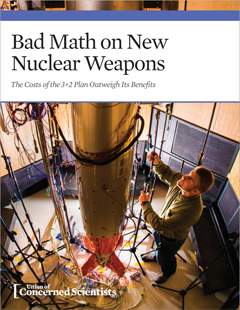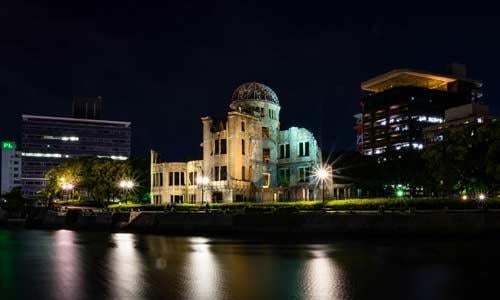The United States hasn’t introduced new warheads to its nuclear arsenal in over twenty years. Instead, existing weapons undergo periodic maintenance programs to address aging issues, replace limited-life parts, and modernize certain components. This approach eliminates the need for nuclear testing, aiding U.S. nuclear nonproliferation efforts.
But despite this—and despite stating “The United States will not develop new nuclear warheads”—the Obama administration is currently planning to do so as part of the so-called “3+2” plan. Under 3+2, several existing warheads on land-based and submarine-launched missiles will be retired and replaced with three new interoperable warheads (the “3” in “3+2”). A bomb and a warhead for an air-launched cruise missile will be refurbished (the “2” in “3+2”). Although the proposed warheads would use nuclear components from existing designs, they would be combined in new ways and would remain untested outside of computer simulations.
The benefits don’t add up
The administration argues that these new designs aren’t in fact new, and that proceeding with 3+2 offers several key benefits. By having three warheads for each of the land-based and sea-based forces, the U.S. may be able to reduce by up to 50 percent the size of the “hedge” force of nuclear weapons that it keeps in reserve. With fewer types of warheads and fewer warheads left to maintain, the overall cost of maintaining the stockpile may decline. The new designs would also add certain safety and security features.
We find that the 3+2 plan would allow for modest reductions to the size of the hedge at current force levels, and for deeper reductions at lower force levels. However, the desired 50 percent reductions could only occur by eliminating the air-delivered bombs and cruise missiles, which isn’t planned. More importantly, under the administration’s plan, any reduction would need to await the completion of new warheads, which would take at least three decades. We find that the United States could reduce the hedge by roughly 50 percent today.
Based on the administration’s own cost estimates, we find no reason to believe that 3+2 would save money—indeed, it may actually be more expensive than simply refurbishing existing warheads. The safety and security features to be added would offer real, albeit limited, benefits.
Perhaps most importantly, 3+2 would entail both technical and political risks. Deploying warheads that use nuclear components in new configurations without nuclear explosive testing could introduce uncertainty about their reliability and lead to calls for resumed testing. A resumption of testing would undermine international commitments to not test nuclear weapons. And deploying new warheads would send exactly the wrong message to the rest of the world—which is why the administration won’t call them new.




